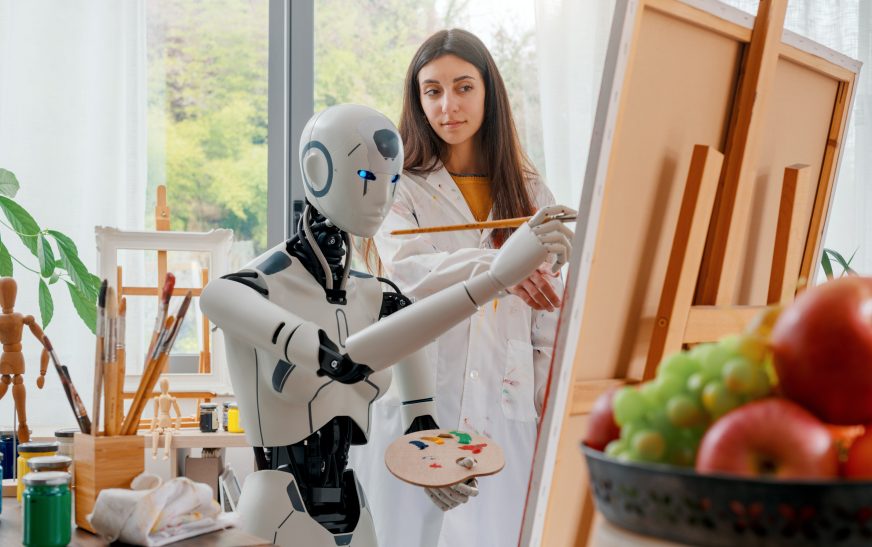If you’re passionate about painting and drawing, you’re about to embark on a journey into the future of artistic creation. We delve into the revolutionary world of 3D pens and tactile painting technologies, uncovering the limitless potential they offer to artists, creators, and enthusiasts.
The Evolution of Art: From Canvas to 3D
Art has always been a medium of self-expression, but with the advent of 3D pens, artists have been given a new dimension, quite literally. These remarkable tools allow artists to create three-dimensional artworks that jump off the canvas. It’s a game-changer for both traditional and digital artists.
3D Pens: Unleashing Creativity in Three Dimensions
3D pens are handheld devices that extrude heated plastic, which quickly cools and solidifies, allowing you to draw in the air. They come in various models, from entry-level to professional, catering to different skill levels.
These pens have transformed the traditional two-dimensional canvas into a tangible, sculptural space. Imagine drawing a magnificent dragon and then holding it in your hand—3D pens enable such magical experiences.
Tactile Painting Technologies: The Sense of Touch in Art
Tactile painting technologies take art to the next level. These devices not only allow you to see your artwork but also to feel it. They combine visual and tactile elements to create an immersive art form that transcends traditional boundaries.
The Intersection of Art and Technology
The fusion of art and technology opens up a world of possibilities. Artists are no longer confined to a flat surface; they can sculpt and mold their creations. Tactile painting technologies provide an extra layer of sensory engagement.
Sculpting in Space: How 3D Pens Work
A 3D pen operates by heating a plastic filament, usually PLA or ABS, and extruding it through a nozzle. As the plastic comes out, it quickly cools and hardens, allowing you to draw or sculpt in three dimensions. The possibilities are endless, from creating intricate jewelry to intricate architectural models.
The Art You Can Touch: Tactile Painting Technologies
Tactile painting technologies employ haptic feedback to simulate textures and shapes. This breakthrough allows you to feel the contours of your artwork as you touch the surface. It’s an art form that brings realism to a whole new level.
Unlocking a World of Possibilities: Applications in Art
The world of 3D pens and tactile painting technologies is not limited to creating sculptures. Artists and creators are finding innovative ways to use these tools.
Bridging the Gap Between Virtual and Physical Art
Tactile painting technologies are a bridge between the digital and physical worlds of art. They enable artists to feel the textures and shapes of their digital creations, providing a profound connection to their work.
Creating Functional Art: Beyond Aesthetics
3D pens are not just for aesthetics. They have practical applications, from customizing phone cases to designing prototypes. Artists and entrepreneurs are finding unique ways to merge art and utility.
Commonly Asked Questions
Q1: What type of plastic filaments do 3D pens use?
A1: Most 3D pens use PLA and ABS plastic filaments, which are non-toxic and easy to work with.
Q2: Can I use a 3D pen for educational purposes?
A2: Absolutely! 3D pens are a fantastic educational tool, teaching students about geometry, spatial thinking, and creativity.
Q3: Are there any safety concerns with 3D pens?
A3: While 3D pens are generally safe, users should be cautious with the heated nozzle to avoid burns. They are not recommended for children without supervision.
Q4: Do tactile painting technologies require special software?
A4: Yes, tactile painting technologies often come with specific software to create and manipulate 3D models.
Q5: Are there any limitations to what you can create with 3D pens?
A5: The only limitation is your imagination. 3D pens can create almost anything you can envision.
Final Words
Haptic hues are not just a visual spectacle; they redefine how we interact with art. From sculpting dragons in mid-air to feeling the textures of a digital masterpiece, these technologies are transforming the way we create and appreciate art. Embrace the future of art, where the canvas knows no bounds.

















